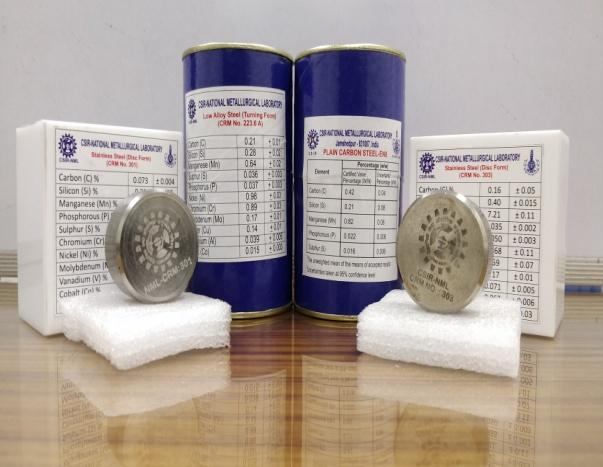.png)
Setting Up Chromatography Equipment in Your Lab

Common challenges in chromatography
Retention problems are a common challenge in chromatography, particularly when working with compounds that are not retentive on traditional reverse-phase (RP) columns.

Selecting CRMs for your analytical method
Selecting the right CRMs (Certified Reference Materials) is a critical step in establishing a robust analytical method. This article provides insights into key factors to consider when choosing CRMs, including purity, traceability, and suitability for your specific application. Understanding the role of CRMs in quality control and method validation is essential for achieving accurate and reliable results. We discuss the importance of selecting CRMs from reputable suppliers who adhere to strict quality standards and provide comprehensive documentation. By carefully considering these factors, you can ensure that your chosen CRMs meet your specific needs and contribute to the overall success of your analytical workflow.

Multi-component standard mixes vs single standards
When conducting research, accurate calibration and validation are crucial. This often involves using chemical standards or certified reference materials (CRMs). Two common approaches are multi-component standard mixes and single standards. Multi-component mixes offer convenience and cost-effectiveness, while single standards provide greater flexibility and control. This article delves into the advantages and disadvantages of each approach, helping you determine the best option for your specific research needs. We discuss factors such as accuracy, traceability, and cost, providing insights to ensure reliable and accurate results in your experiments.

Understanding certified reference materials (CRMs)
Certified reference materials (CRMs) are highly characterized materials with known and certified properties. They play a crucial role in analytical chemistry by providing a reference point for calibrating instruments, validating analytical methods, and ensuring the accuracy of measurements. CRMs are essential for quality control, research, and regulatory compliance. This article explores the importance of CRMs, their different types, and how they contribute to reliable and accurate analytical results. Discover how IT tech can provide you with a comprehensive range of Chemical Standards & CRMs to meet your specific needs.

Comparing chemical indicators vs biological indicators
Chemical and biological indicators are crucial for monitoring sterilization processes in research laboratories. Chemical indicators provide a visual confirmation of exposure to sterilization conditions, while biological indicators offer a more robust assessment of microbial inactivation. Chemical indicators are typically less expensive and easier to use, but they only indicate exposure to the sterilization process, not actual sterility. Biological indicators, on the other hand, contain viable microorganisms that are killed by the sterilization process, providing a direct measure of sterility. The choice between chemical and biological indicators depends on the specific application, regulatory requirements, and desired level of assurance. This article delves into the advantages and limitations of each type of indicator, helping you make informed decisions for your sterilization monitoring needs.

Selecting the right bio indicator for your sterilizer
Sterilization is a critical process in various industries, and ensuring its effectiveness is paramount. Bio indicators play a vital role in monitoring sterilization processes, providing a reliable measure of the effectiveness of the sterilization cycle. Choosing the right bio indicator is essential for accurate and reliable results. This article will guide you through the factors to consider when selecting a bio indicator, including the type of sterilizer, the target organism, and the desired level of sensitivity. By understanding these factors, you can select the most appropriate bio indicator for your specific needs, ensuring the highest level of sterilization efficacy and patient safety.

Types of biological indicators and their classes
Biological indicators (BIs) are essential tools for monitoring the effectiveness of sterilization processes. They contain a known population of resistant microorganisms that are killed when exposed to a specific sterilization method. This article delves into the different types of BIs, including their classifications based on the type of microorganism, the carrier material, and the intended use. Understanding these classifications is crucial for selecting the appropriate BI for your specific sterilization process, ensuring accurate and reliable monitoring of sterilization effectiveness.

Selecting disposable labware for different applications
Selecting the right disposable labware is essential for ensuring accurate and reliable results in laboratory experiments. This article provides a comprehensive guide to choosing the appropriate disposable labware for different applications. It covers various types of disposable labware, including pipettes, test tubes, petri dishes, and microplates, and discusses their advantages and disadvantages. The article also highlights factors to consider when selecting disposable labware, such as material compatibility, sterility, and volume capacity. By understanding these factors, researchers can make informed decisions about the disposable labware that best suits their specific needs and ensure the success of their experiments.

Disposable pipette tips vs reusable - pros and cons
Choosing between disposable and reusable pipette tips is a crucial decision for any lab. Disposable tips offer convenience and sterility, while reusable tips provide cost-effectiveness and sustainability. This article delves into the pros and cons of each option, considering factors like accuracy, contamination risk, and environmental impact. By understanding the benefits and drawbacks of both disposable and reusable pipette tips, researchers can make informed decisions that align with their specific needs and budget.
































































































.png)

























































.png)




























